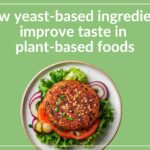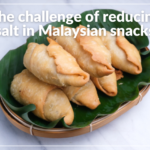Food industry has salt, sugar and fat in sight! Consumers are aware of the direct link between food and health. They crave for healthier products but certainly not at the expense of taste. To address this major challenge, yeast extract is an answer. Indeed, it allows to keep the balance between pleasure, nutrition and naturalness.
Salt reduction, a key challenge for the food industry
According to the World Health Organization1, high sodium consumption contributes to high blood pressure. Therefore, it increases the risk of heart diseases and stroke. Indeed, most people consume too much of salt, on average 9-12g per day, or the equivalent to twice the recommended maximum level of intake. At the same time, 33% of world consumers rate “low salt” as very important criteria in purchasing. In this context, food manufacturers have implemented many initiatives to reduce salt in their products. They are strongly encouraged to continue these efforts, more specifically by reformulating their products.
Yeast extract is currently one of the most effective solution on the market to reduce salt, since it offers many taste properties to support the development of salt-reduced food and beverages. As global producer of yeast products, Biospringer recommends two main approaches to reduce salt content, at least 30%, without compromise on taste.
The first salt reduction approach is based on yeast extracts naturally rich in nucleotides. It provides umami taste and a long-lasting effect, intensifying other tastes and flavors. The second approach consists in bringing specific flavor notes: meaty, cheesy, or even vegetal notes to a formula.
Used in very small quantity, yeast extract provides taste to soups, sauces, ready meals and other savory food applications, just like spices do. It reduces that way the need for seasoning, salt included. There are many examples of everyday food products using yeast extract to reduce salt such as Bolognese sauce, chicken broth or bacon flavoured snacks.
Fat and sugar reduction, the two main challenges of nutritional improvement
The increase of diabetes and obesity is a major public health issue. Worldwide obesity has more than doubled since 1980, to reach more than 600 million adults. Estimations say the diabetics should reach around 693 million in 20452. In this context, international and national nutritional guidelines were set up to fight against these food related diseases, and official health organisms encourage the sugar tax to tackle the purchase of beverages with added sugar.
Sugar reduction
32% of consumers rate “low sugar” as very important in purchasing decisions3. Biospringer provides yeast ingredients and expertise, allowing food manufacturers to offer flavorful and indulgent low-sugar/no-sugar foods and beverages.
Yeast extract delivers various benefits that intensify sweetness or enable sugar reduction. To do so, it brings or subtly reveals specific flavor notes such as roasted flavors, malted, cocoa or cereals. It also brings out the aromatic notes of eggs, vanilla, cacao ingredients. With these flavors intensified, the food developers have the possibility to reduce sugar up to 30% while maintaining the overall taste balance of various type of products like cookies, sweet sauce and more.
Besides, yeast extract is a real ally when food formulators consider adding sweeteners in their recipes, especially in “no sugar beverages”. Not only yeast extract highlights tastes and flavors, making sugar reduction possible, but it also contributes to mask undesirable metallic or licorice flavor notes or lingering effect due to the use of sweeteners.
Fat reduction
65% of worldwide population is cutting down on fats3. Unfortunately, low-fat products are often associated with poor taste quality, explaining the challenge when it comes to develop healthy and indulgent food.
To recover taste and flavor in reduced-fat food, Biospringer suggests some yeast extracts that provide a sensation of mouthfulness and smoothness. They give a richer, fuller and stronger taste to low-fat foods, allowing a fat reduction up to 30%. For example, in a low-fat salad dressing, yeast extracts intensify fatty flavors; all without compromising the flavor of the dish or recipe.
Biospringer, your partner for nutritional improvement
With consumers’ expectations changing towards healthier diets, nutritional profile improvement has a great potential and a major ally with yeast extract.
By providing close technical assistance, Biospringer’s Culinary Center builds strong and reliable partnerships with its customers worldwide. A team of food experts is dedicated to find adapted technical solutions. They will also initiate new product developments depending on the customer’s needs in taste improvement and specific nutritional profiles.
The wide range of performant yeast extracts and its expertise in taste makes Biospringer a legitimate player to support food manufacturers in tackling these nutritional challenges.
Sources:
- WHO, 2016 – 2. Atlas du diabète de la Fédération Internationale du diabète, 8ème édition, 2017
- Nielsen, global health and wellness report, 2015
If you want to know more,









